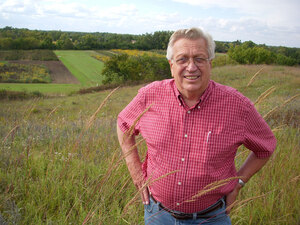 Tom Philpott asks in Grist about
Why Monsanto is paying farmers to spray its rivals’ herbicides
Tom Philpott asks in Grist about
Why Monsanto is paying farmers to spray its rivals’ herbicides
…Monsanto has been forced into the unenviable position of having to pay farmers to spray the herbicides of rival companies.Roundup, trade name for glysophate, doesn’t work anymore because the weeds mutated: Continue readingIf you tend large plantings of Monsanto’s “Roundup Ready” soy or cotton, genetically engineered to withstand application of the company’s Roundup herbicide (which will kill the weeds — supposedly — but not the crops), Monsanto will cut you a $6 check for every acre on which you apply at least two other herbicides. One imagines farmers counting their cash as literally millions of acres across the South and Midwest get doused with Monsanto-subsidized poison cocktails.
The move is the latest step in the abject reversal of Monsanto’s longtime claim: that Roundup Ready technology solved the age-old problem of weeds in an ecologically benign way.


